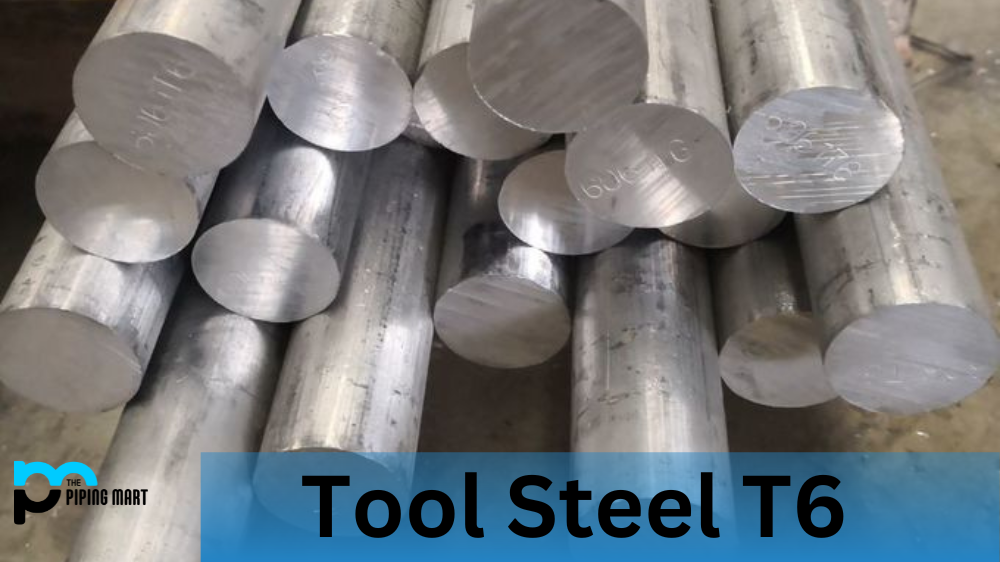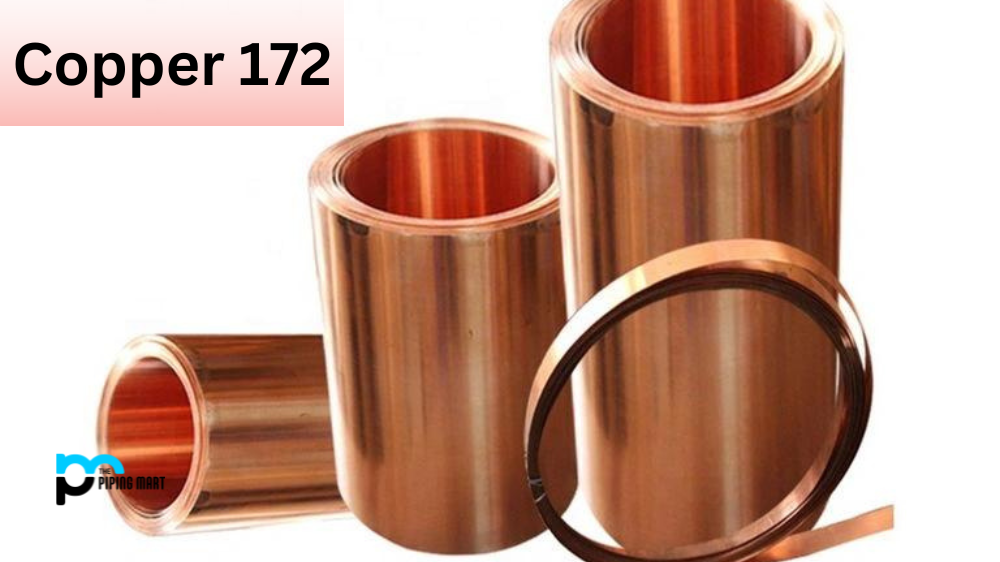UNS T12006 is a type of alloy steel designed for machine tools. This particular alloy contains various elements, including iron, manganese, chromium, carbon, and vanadium. It has excellent wear resistance and offers superior toughness when used in applications with high temperatures. Let’s take a closer look at the composition, chemical properties, mechanical properties, physical properties, uses of corrosion resistance, heat resistance, heat treatment techniques, machining processes, and welding techniques associated with tool steel T6.
T6 Tool Steel Composition
The composition of tool steel T6 includes Iron (Fe) – 85%, Manganese (Mn) – 1.50%, Chromium (Cr) – 0.90%, Carbon (C) – 0.20%, and Vanadium (V) – 0.15%.
| Carbon | 1.25 – 1.5 |
|---|---|
| Iron | Balance |
| Manganese | 1.6 – 2.1 |
| Molybdenum | 1.25 – 1.75 |
| Nickel | 1.55 – 2.05 |
| Phosphorus | 0.03 max |
| Silicon | 1 – 1.5 |
| Sulphur | 0.03 max |
T6 Tool Steel Chemical Properties
UNS T12006 exhibits good hardness at temperatures up to 1000°F (538°C). It also has a low susceptibility to thermal shock and an increased resistance to wear compared to other tool steels such as D2 or H13.
T6 Tool Steel Mechanical Properties
UNS T12006 can maintain its strength up to a temperature of 1000°F (538°C). Depending upon the application requirements, it can be hardened up to Rockwell C60 on the low end and Rockwell C67 on the high end. It also offers excellent fatigue strength at elevated temperatures due to its high flexibility and impact strength.
| Proof strength
Rp0.2 |
Tensile strength
Rm (MPa) |
Impact energy
KV (J) |
Elongation at fracture
A (%) |
Reduction in cross section on fracture
Z (%) |
As-Heat-Treated Condition | Brinell hardness (HBW) |
| 633 (≥) | 366 (≥) | 43 | 23 | 41 | Solution and Aging, Annealing, Ausaging, Q+T,etc | 134 |
T6 Tool Steel Physical Properties
UNS T12006 has excellent dimensional stability and is resistant to distortion caused by thermal cycling or vibration during machining operations. Additionally, it has good electrical conductivity with low magnetic permeability, which makes it ideal for use in electronic components or assemblies that may require higher levels of electrical conductivity than other materials can provide.
| Density (lb / cu. in.) | 0.284 |
|---|---|
| Specific Gravity | 7.85 |
| Melting Point (Deg F) | 2590 |
| Modulus of Elasticity Tension | 28 |
T6 Tool Steel Uses
UNS T12006 is commonly used for dies and molds, and cutting tools such as drills or end mills due to its superior wear resistance capabilities at elevated temperatures compared to other steels like D2 or H13. It can also be used for valves and fittings in pipelines or other plumbing applications because it can withstand higher operating pressures without deforming or becoming damaged by corrosion over time.
Corrosion Resistance
Tool Steel T6 has excellent corrosion resistance when exposed to acidic environments due to its chromium content which acts as a barrier against rust formation on the surface of the material. Additionally, it does not suffer from stress corrosion cracking which makes it ideal for use in outdoor applications where exposure to moisture or humidity is likely over time, such as water pipelines or valve bodies used in hydraulic systems that may come into contact with water occasionally during operation cycles.
Heat Resistance
Tool Steel T6 can operate at temperatures up to 1000°F (538°C) without suffering any significant loss in strength or hardness, so it can be used safely in extreme heat environments without risk of failure due to material degradation over time. However, care should be taken not to exceed this temperature limit as it could result in permanent damage being done to the material itself, rendering it unusable for further applications until repairs are made.
Heat Treatment
The heat treatment process for tool steel T6 involves heating the material slowly until it reaches an austenitizing temperature ranging between 1675-1700⁰F (915-930⁰C). After reaching this temperature, it should be quenched rapidly using oil, water, or air cooling methods before being tempered between 350-400⁰F(175-200⁰C). This will help increase the hardness while still maintaining some flexibility within the material which will help make it more suitable for certain types of applications that require greater levels of durability than normal.
Machining
Due to its relative softness compared with other metals, tool steel t 6 can typically be machined using standard CNC machines with little difficulty, provided that adequate cutting speed, feed rate, and depth settings are correctly chosen. Additionally, because this type of metal does not contain any hard elements such as cobalt which could cause excessive wear on cutting tools, it can usually be machined using standard carbide tipped end mills without any noticeable signs of wear after extended periods.
Welding
Tool Steel t 6 can also be welded using all common welding processes, including Shielded Metal Arc Welding (SMAW), Gas Metal Arc Welding(GMAW), Flux Core Arc Welding(FCAW), Gas Tungsten Arc Welding(GTAW), Submerged Arc Welding(SAW), Oxyacetylene Gas welding(OAGW). Depending upon the application requirements, some preheating prior welding may need to occur prior to welding. However, if appropriately done, then no post-weld heat treatment will usually be necessary once completed successfully.
Conclusion
In conclusion, tool steel t 6 provides an excellent balance between durability, wear resistance, and flexibility, making it an ideal choice for many different types of machine parts that must often endure high amounts of stress while still remaining reliable even after extended periods of usage. Its superior corrosion resistance also makes it very suitable for applications where exposure to moisture may occur during operation cycles. Furthermore, its relatively easy machinability and ability to weld using all standard welding processes means that manufacturing parts from this type of metal typically requires fewer man hours and lower cost compared to similar materials, making it an attractive option when producing large quantities of components quickly and economically. Finally, always exercise caution when performing any kind of metalworking operations for the safety sake of all involved parties!

Meet Bhavesh, a seasoned blogger with a wealth of knowledge and experience. From metal products manufacturing to retail, Bhavesh has a diverse background in various industries and is dedicated to sharing his insights and expertise with readers.




